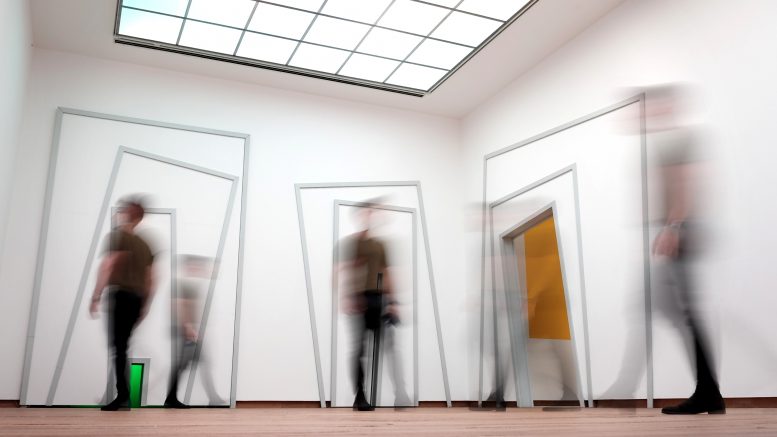This lavish collection from the Austrian painters, young Egon Schiele, and masterful Gustav Klimt, reveals an enduring journey through their minds.
Two figures embracing each other lovingly. It’s tender but there’s a touch of sadness in her gaze. Her eyes remain closed with sorrow but she continues to embrace him with warmth. The drawing, replete with golden rings and rough circular shapes, reveals part of the artist’s studies for one of the most remarkable works of art of the 20th century; The Kiss.
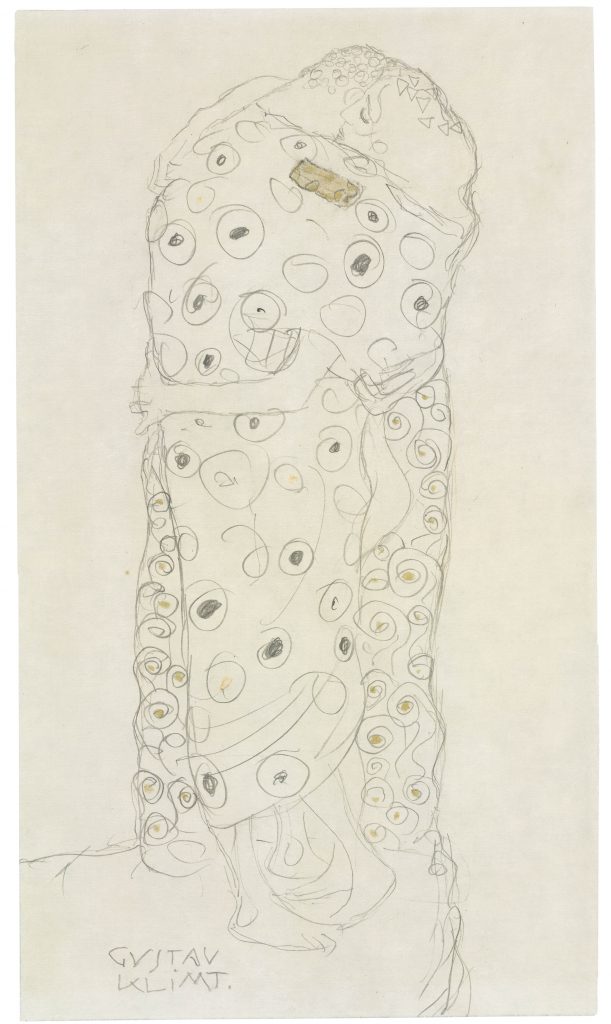
Gustav Klimt, Standing Lovers, 1907-08. The Albertina Museum, Vienna. Exhibition organised by the Royal Academy of Arts, London and the Albertina Museum, Vienna.
It was in 1906 when the young and insightful Egon Schiele (1890-1918) arrived in Vienna for the first time to pursue his desires of becoming an artist. When he first met Gustav Klimt (1862-1918) in 1908, Klimt was already a well-settled artist who Schiele profoundly admired. It is in the Royal Academy’s sensuous, compelling and captivating collection of drawings and studies, where the passion of these two men meet.
At the start, the exhibition seems to portray what they both have in common. Klimt’s early studies glorify the female body, his subtle line becomes nearly imperceptible, reducing all the complexities of the human shape to mere strokes, making them incredibly delicate. Schiele, heavily influenced by Klimt’s golden period, captures Klimt’s essence depicting female nudity in an ideliased way. Nonetheless, as the show goes on, the differences between the two artists become evident. Schieles’s drawings of Viennese prostitutes and his own self-portraits are an unsettling portrayal of his art. However, it is Schiele’s prison series, where he draws his surroundings, which becomes remarkably disturbing. He studies the walls, the cell door and cleaning his brushes, and his mood is exquisitely captured by the emptiness of the room.
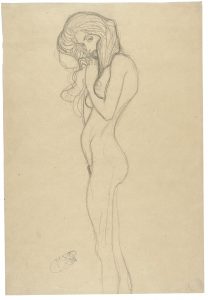
Gustav Klimt, Standing Female Nude (Study for the Three Gorgons, “Beethoven Frieze”), 1901. The Albertina Museum, Vienna. Exhibition organised by the Royal Academy of Art, London and the Albertina Museum, Vienna.
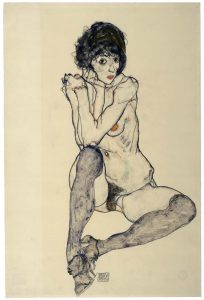
Egon Schiele, Seated Female Nude, Elbows Resting on Right Knee, 1914. The Albertina Museum, Vienna. Exhibition organised by the Royal Academy of Arts, London and the Albertina Museum, Vienna.
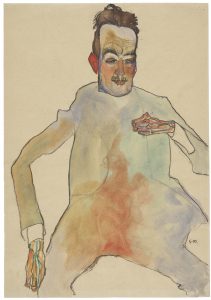
Egon Schiele, The Cellist, 1910. The Albertina Museum, Vienna. Exhibition organised by the Royal Academy of Arts, London and the Albertina Museum, Vienna.
Both Schiele and Klimt understood deeply the complexities and the beauty of the human form, however it is the way they approach it, which makes them so intrinsically distinct. In one of Schiele’s paintings of a nude prostitute with truncated arms, there is a troubling touch which is nearly palpable. It is not veneration for the female body, it’s raw to its essence but it becomes impossible not to look. That is, one of his aims after all; to provoke. Klimt is different. He draws women who seem to be floating, they are these beautiful, ethereal floating figures which evoke nothing more than sensuality. It is a continuous exploration of the human body for both artists, as Schiele said: “The figure is after all the most essential, and what gives me the greatest satisfaction, the human body”.
It is this intense exploration of their minds and passions which make the Royal Academy’s exhibition so alluring.
The exhibition will be running from 4 November 2018-3 February 2019
Words: Raquel Pacheco | Subbing: Nia Tyrell

